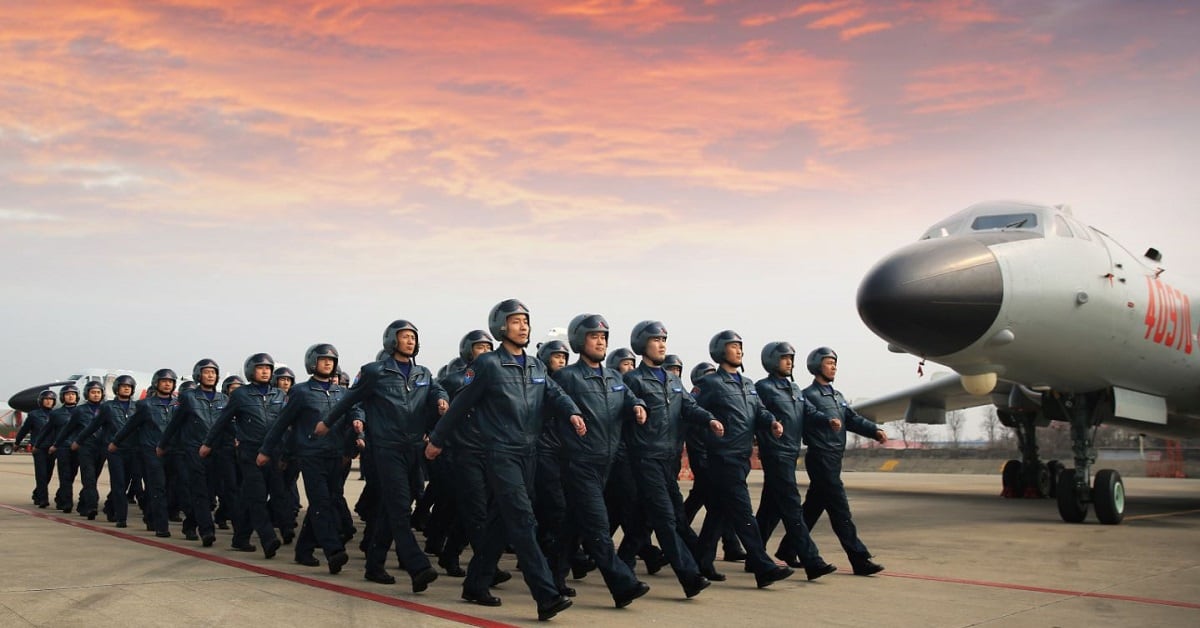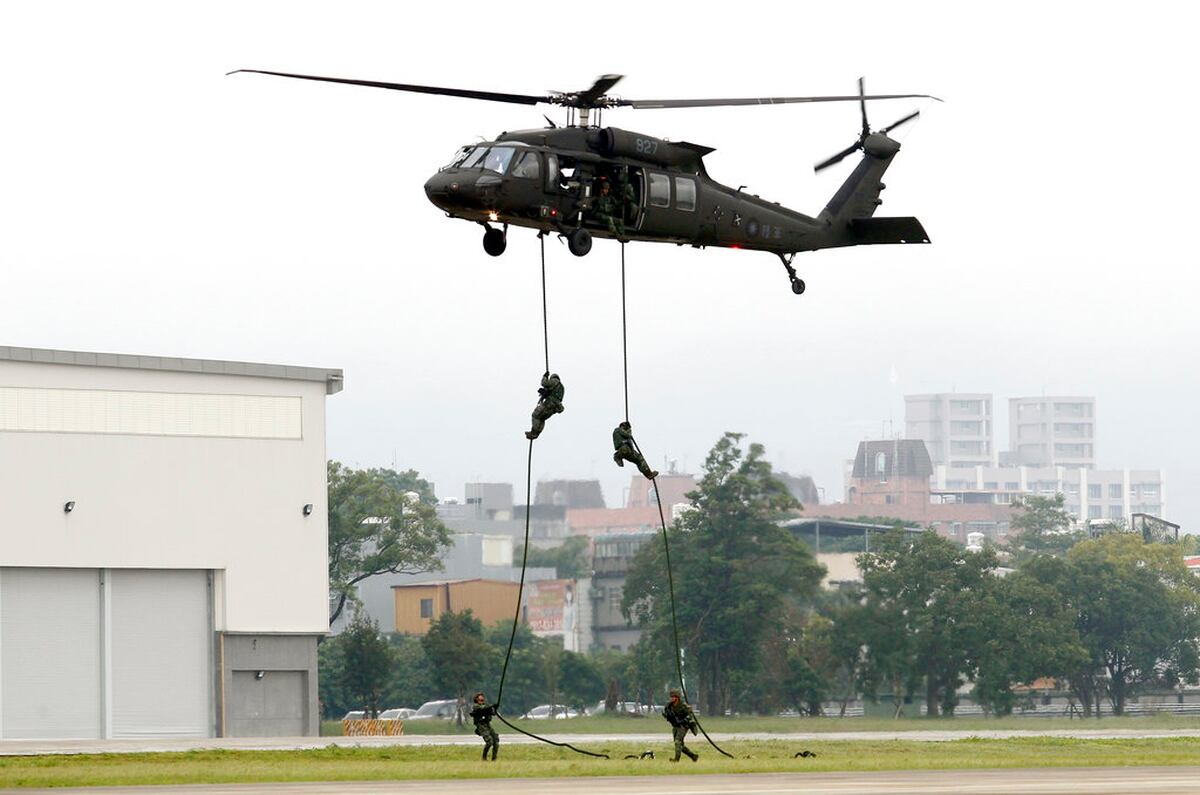China is laying the groundwork for war with Taiwan
By: Mike Yeo
03.May.2019

Airmen walk in formation prior to a combat drill with H-6K bombers. (Yang Ruikang/People's Republic of China)
MELBOURNE, Australia – China is improving and increasing its options for a possible future invasion of Taiwan, with military reforms and investments in multi-domain military capabilities offering a range of options to defeat the self-governing island, according to a Pentagon report.
These options range from an air and sea blockade of Taiwan to a full-scale invasion, although the latter option would require a significant increase in the number of amphibious ships, according to the latest annual China Military Power Report released Thursday by the Department of Defense.
Nevertheless, the report cautioned that the People’s Liberation Army or PLA’s efforts to convert the bulk of its maneuver units to combined arms brigades, “should eventually create more capable, modular brigades and battalions,” while the “expansion of army aviation and the creation of two new air assault brigades also provides more attack, air assault and close air support options for a Taiwan invasion.”
China’s PLA has also made efforts to improve its ability to insert forces by air, by restructuring its airborne corps and establishing air assault units, which would be charged with aerial insertion and seizing key terrain. This restructure saw it reorganizing its previous units into airborne infantry brigades, a special operations brigade, an aviation brigade, and a support brigade, with the corps conducting training exercises in 2018 that involved long-range raid and airborne operations based on actual war plans.
The service has also established a joint logistics support force in late 2016, with the primary goal of supporting a strategic campaign such as a Taiwan invasion. This would be accomplished through command and control of joint logistics, delivering of materiel, and managing various civil-military integration support mechanisms. It’s strategic support force would then be responsible for the use of electronic warfare and cyber operations during a Taiwan contingency, by “seizing and maintaining battlefield information control in contemporary informatized warfare.”
The report added that the PLA is likely still exploring how to reform its joint command processes to integrate information operations and intelligence, surveillance and reconnaissance capabilities more fully at the theater-level, but noted that the structural reforms have removed the biggest barriers to integrating these strategic capabilities.
Nonetheless, the report raises questions about China’s current ability to conduct a full-scale invasion. Despite advances in the quality and quantity of its surface combatants and submarines, the PLA Navy has in recent years only acquired a small number of landing platform docks “indicating a near term focus on smaller scale expeditionary missions rather than a large number of [Landing Ship Tanks] and medium landing craft that would be necessary for a large-scale direct beach assault.”
The preparedness of the recently expanded PLA Marine Corps was also in doubt, with exercises rarely going beyond battalion level events, and its newly raised brigades yet to receive “their full complement of required equipment and not fully mission capable.” As a consequence, the report noted that the scope of training for these units was “rudimentary and the new brigades remain unequipped to perform amphibious assault operations," concluding that an invasion of Taiwan, besides being fraught with significant political risk, “would likely strain China’s armed forces.”

 www.defensenews.com
www.defensenews.com
By: Mike Yeo
03.May.2019

Airmen walk in formation prior to a combat drill with H-6K bombers. (Yang Ruikang/People's Republic of China)
MELBOURNE, Australia – China is improving and increasing its options for a possible future invasion of Taiwan, with military reforms and investments in multi-domain military capabilities offering a range of options to defeat the self-governing island, according to a Pentagon report.
These options range from an air and sea blockade of Taiwan to a full-scale invasion, although the latter option would require a significant increase in the number of amphibious ships, according to the latest annual China Military Power Report released Thursday by the Department of Defense.
Nevertheless, the report cautioned that the People’s Liberation Army or PLA’s efforts to convert the bulk of its maneuver units to combined arms brigades, “should eventually create more capable, modular brigades and battalions,” while the “expansion of army aviation and the creation of two new air assault brigades also provides more attack, air assault and close air support options for a Taiwan invasion.”
China’s PLA has also made efforts to improve its ability to insert forces by air, by restructuring its airborne corps and establishing air assault units, which would be charged with aerial insertion and seizing key terrain. This restructure saw it reorganizing its previous units into airborne infantry brigades, a special operations brigade, an aviation brigade, and a support brigade, with the corps conducting training exercises in 2018 that involved long-range raid and airborne operations based on actual war plans.
The service has also established a joint logistics support force in late 2016, with the primary goal of supporting a strategic campaign such as a Taiwan invasion. This would be accomplished through command and control of joint logistics, delivering of materiel, and managing various civil-military integration support mechanisms. It’s strategic support force would then be responsible for the use of electronic warfare and cyber operations during a Taiwan contingency, by “seizing and maintaining battlefield information control in contemporary informatized warfare.”
The report added that the PLA is likely still exploring how to reform its joint command processes to integrate information operations and intelligence, surveillance and reconnaissance capabilities more fully at the theater-level, but noted that the structural reforms have removed the biggest barriers to integrating these strategic capabilities.
Nonetheless, the report raises questions about China’s current ability to conduct a full-scale invasion. Despite advances in the quality and quantity of its surface combatants and submarines, the PLA Navy has in recent years only acquired a small number of landing platform docks “indicating a near term focus on smaller scale expeditionary missions rather than a large number of [Landing Ship Tanks] and medium landing craft that would be necessary for a large-scale direct beach assault.”
The preparedness of the recently expanded PLA Marine Corps was also in doubt, with exercises rarely going beyond battalion level events, and its newly raised brigades yet to receive “their full complement of required equipment and not fully mission capable.” As a consequence, the report noted that the scope of training for these units was “rudimentary and the new brigades remain unequipped to perform amphibious assault operations," concluding that an invasion of Taiwan, besides being fraught with significant political risk, “would likely strain China’s armed forces.”

China is laying the groundwork for war with Taiwan
China is improving and increasing its options for a possible future invasion of Taiwan, with military reforms and investments in multi-domain military capabilities offering a range of options to defeat the self-governing island.


